Toyota’s best-selling vehicle is long-running. Toyota Corolla, but second is Toyota’s resilient pickup the Hilux that’s been sold for over 50 years.
No matter where you are in the world, you’ll likely find one moving up to a ton of cargo down a dusty lane.
In the process, it’s turned into a bit of a Jekyll and Hyde vehicle.
On the one hand, it’s the basic indestructible commercial vehicle that thousands of businesses rely on every day.
On the other, it’s become a well-specced weekend leisure vehicle. And in some cases, it’s a bit of both!
So why did this unassuming vehicle get a place of honor at the Top Gear studio, and what other successful vehicles have been born out
of this long-running pickup?
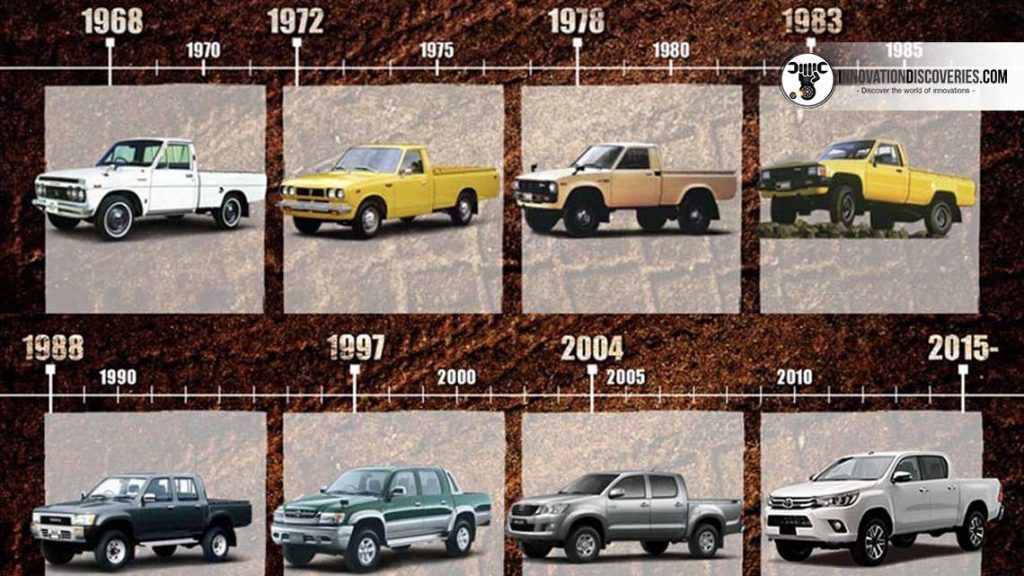
This is the Toyota Hilux Story.
The company that became Toyota had been producing trucks for many years before the Hilux arrived.
The first truck – the G1 was produced in 1935, and it nearly bankrupted the company in the process.
After the war, it had morphed into the KB that was simpler to manufacture, but the first pickup that was the size of the Hilux, the
SB launched in 1947.
It was based on the SA passenger car that had been modeled on the Volkswagen Beetle.
In 1941 the Japanese military stumbled upon an American Willy’s Jeep and asked Toyota to make their own version.
By the 1950s Toyota was producing what would become the Land Cruiser, and this gave them a lot of experience in small ladder-on-frame vehicles.
A pickup version was created, and exported, and this would be the first Toyota pickup many people outside Japan would see.
As for dedicated pickups, The SB had become the SG, and its successor, the 1.25 ton (1.2 metric ton) RK would launch in the mid-1950s.
Renamed the Toyota Stout by the mid-60s it was also being exported but didn’t sell well.
The new 1964 model sold a total of 4 in all of North America!
Undeterred, Toyota produced a smaller version of the Stout – the Lite Stout – in 1963.
Sales again were modest both home and abroad but gave Toyota additional experience in making small pickup designs.
A couple of Toyota’s pickups were based on car platforms.
The Toyota Crown had been offered as a pickup since 1962, and the Toyota Corona since 1964.
But these were little more than passenger cars with open backs and beefed-up suspension.
A pickup that could carry a decent amount of weight needed a separate ladder chassis.
North America was the home of the pickup, and Toyota wanted a vehicle that would compete with Detroit’s finest.
But it wouldn’t come from Toyota. In 1967 they’d purchased Hino Motors who’d been producing the Briska since 1961, a truck that had its origins in Renault’s 4CV.
The Briska competed directly with Toyota’s Lite Stout so it was decided an updated version of the Briska would become Toyota’s new
pickup.
It would be called the “Hilux” – a contraction of “High Luxury”, but it was only high luxury compared to the old Toyota Stout.
This would remain a utilitarian pickup, with a metal dashboard, practical bench seat that could hold 3 people, and minimal creature
comforts.
The Hilux went on sale in 1968 in Japan as well as international markets such as the USA and Australia.
Soon Toyota’s Crown and Corona pickups were discontinued as Toyota threw its weight behind the Hilux.
The indicators were initially placed above the headlights on the bonnet.
The reason was to fill in holes where the mirrors had to be mounted in Japan.
With a 1969 long-wheelbase model and a larger 1.9L engine for North American customers, the vehicle was a hit and was soon flying
off dealer’s forecourts.
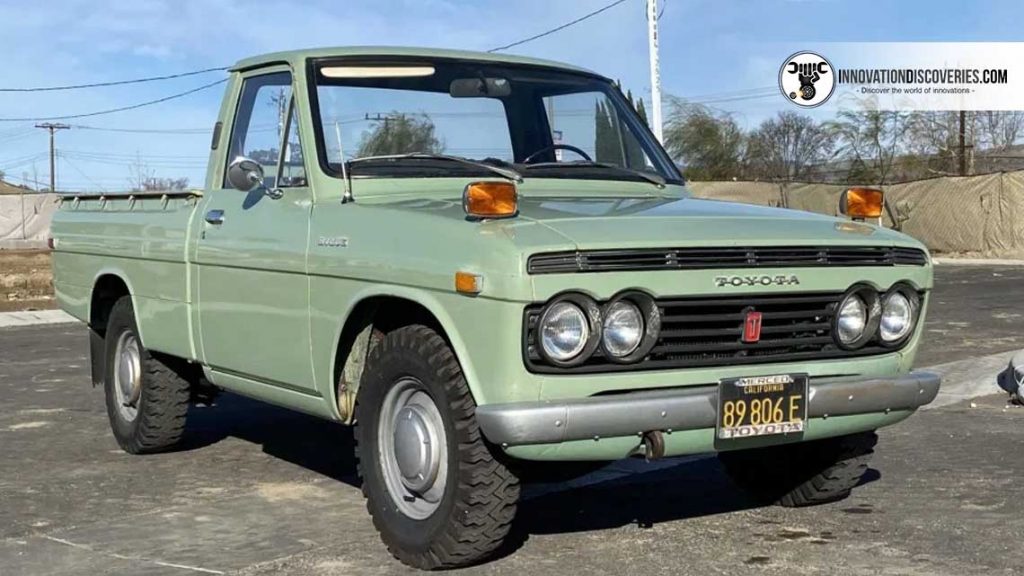
The 1.5L engine was increased to 1.6L in 1971, but a larger change came with the first update in 1972.
The front end was cleaned up, and the rear lights were amalgamated into one vertical cluster.
It also got safer servo-assisted dual brake master cylinders that helped the Hilux stop when it was carrying heavy loads.
And for the first time, the truck arrived on British shores.
master cylinders that helped the Hilux stop when it was carrying heavy loads.
And for the first time, the truck arrived on British shores.
The Hilux name was phased out in North America where it was renamed the “Toyota Truck” or Toyota Pickup Truck” to help it compete with Nissan’s “Datsun Truck”.
It’s a refreshingly honest naming system, something other car companies could probably learn from!
Things “picked up” in 1974 and 1975 for the Hilux.
With an extra gear on the manual gearbox, an automatic option, and a 2.0L engine it was awarded “Pickup truck of the year” in the USA – by now the Hilux’s largest market.
The “sporty” SR5 version appeared, with a 96hp (72 kW) 2.2L engine.
Sales jumped, with over 100,000 annual sales in 1975, and just two years later the Hilux crossed the 200,000 sales barrier.
Toyota’s pickup wasn’t just being used to move concrete around a job site – this was turning into something consumers used for weekend getaways.
And what better way to build on this success, but with the 1978 3rd generation model?
The 4-wheel drive would expand its appeal, with technology borrowed from the high-flying Land Cruiser.
The body would be further simplified to save on production costs, such as single front headlamps.
And a frugal diesel engine would be added in 1979.
The Super Deluxe model offered a 90mm (3.5”) longer cab, but this would evolve into a full four-seater double cab model that became particularly popular as family runabouts in remote areas like the Australian Outback.
This was becoming a really flexible truck for both work and play.
By now that spartan interior was getting some “high luxury” love to live up to the Hilux’s name.
A radio, air conditioning, and higher quality materials were all born out of Toyota’s close study of its customers’ needs.
Front suspension changed from coil springs to a double-wishbone set up to give the truck a more car-like ride.
The Hilux was leapfrogging the competition, and sales continued to increase, with over 300,000 annual sales.
In 1981 Toyota investigated turning the Hilux into a covered 2 and 4 seat SUV.
They worked with American RV company Winnebago to produce models such as the Trekker.
Sales were encouraging and would result in Toyota producing its own model as 1984.
Toyota Hilux Surf, also known as the 4Runner that’s been a great seller ever since.
The 1983 4th generation Hilux styling update gave the pickup a more commanding stance on the road, especially the raised-suspension
models.
The Super Deluxe longer cab was back as “Xtracab”, with 150mm (6”) of storage space behind the seats.
Toyota added a turbodiesel to its line-up, but it wasn’t much more powerful than the regular diesel.
With petrol being cheap in North America it wasn’t popular, especially as the new V6 engine offered all the extra power customers
needed.
Every company under the sun seemed to do some sort of product placement in the 1985 blockbuster “Back to the Future” and Toyota was no different.
The Hilux was the focus of Marty McFly’s consumerist desires, and it can’t have hurt Hilux sales especially as our hero gets the
girl and the truck at the end.
By now sales were over 400,000 per year as Toyota’s reputation for quality and continuing interest in recreational pickups drove sales
ever higher.
Soon Hilux’s were being customized with big tires, driving lights, raised suspension and bull bars, plus the obligatory altering
of the “TOYOTA” lettering on the tailgate!
But that success was a double-edged sword.
The 1987 war between Chad and Libya was known as the “Toyota War”.
Both sides found that the go-anywhere Hilux was the perfect vehicle to move their soldiers and their tools of war.
It also appeared in ISIS promotional video footage in 2015.
War footage from conflicts in the 1990s would be peppered with shots of trucks with “TOYOTA” written on the back, showing just how widespread the Hilux’s adoption had been around the globe.
The 1988 5th generation Hilux looked mostly an evolution from the outside, but the interior became more car-like and refined.
Toyota continued to improve the quality, with a new one-piece loading bay eliminating rusting seams.
The 2+2 Xtracab became more “Xtra” with more room for cramped rear passengers.
By now assembly was happening all around the world.
Toyota created a joint venture with General Motors, and this resulted in Hilux production at GMs Freemont factory in California.
The factory had been built in 1962 but by the 1970s was known as having the worst workforce in the USA.
Workers would drink on the job, were frequently absent, and were known to put Coke bottles inside the door panels so they would rattle
to annoy customers!
Toyota’s influence caused a lot of friction in the already fractious factory, but over time quality GM and Toyota vehicles were rolling
off the production line.
GM gained experience in Toyota’s lean manufacturing process, and Toyota got around export restrictions and reduced their shipping costs.
Production would continue until 2010 when GM when into bankruptcy.
But only a month after production ended, Tesla announced they would purchase the plant and soon started Model S production.
In 1989 Volkswagen released the Taro.
What’s surprising about it is it was an unlikely joint venture between VW and Toyota.
The pickup was merely a rebadged Hilux produced at Volkswagen’s Hannover factory.
This was a marriage of convenience.
Toyota wanted a larger part of the European commercial vehicle market, and VW didn’t have a 1-tonne pickup they could sell.
However, with pickups not selling well in Europe, sales were lackluster and VW Taro production ended in 1997.
Elsewhere sales were blossoming, and Toyota had stretched and raised the Hilux to satisfy an increasingly diverse pickup market.
They’d augment the Hilux and 4Runner with the larger T100 in 1992, bringing the fight to Ford, Chevy, and Dodge, while trying to
fend off competition from Nissan.
But without an extended cab and a V8 engine sales were disappointing.
But the Hilux was successful in North America, so to increase sales Toyota felt a need to produce a pickup specifically for American
tastes.
The result was the Toyota Tacoma, named after a local Native American word for Mount Rainier in Washington State, but also the name for the slightly smelly city just south of Seattle.
The Tacoma would be assembled in the same Freemont factory as the Hilux and was a completely new vehicle that focused on ride quality, handling, and comfort, as more and more Americans were using these as their daily driver.
It would take almost 10 years until the next generation Hilux burst on the scene in 1997.
Toyota wouldn’t do much to the winning Hilux formula, although it would get an independent front suspension for the first time.
Hilux sales weren’t growing, but that’s because Toyota was launching a range of very similar vehicles that were to some extent cannibalizing Hilux sales.
Toyota of Thailand did a 4Runner-style conversion of the Hilux into an SUV with the help of a Thai car company to produce the Hilux Sport
Rider in 1998.
This led to a dedicated version called the Fortuner.
And the Toyota Kijang was doing the same thing in Indonesia and being exported across the planet, along with the Hilux-based 2004 Toyota Innova minivan.
Toyota’s solid, dependable pickup had an unrefined ride for rich western customers, but for negotiating dirt tracks or potholed
roads it was the perfect vehicle.
Developing countries bought it to help build the infrastructure to turn them into developed countries.
But that wasn’t to say the Hilux had gone back to its stripped-back basic roots.
It could still be equipped to a high level.
Possibly the best advert for any vehicle, ever, came in 2003 when Top Gear decided to try to destroy a 1980s Hilux with 190,000
miles (300,000 km) on the clock.
Despite being left in the Bristol channel for several hours and strapped to the top of a block of flats that was demolished, it
stubbornly refused to die, and could still be driven.
Toyota UK cashed in by producing a special “Invincible” model.
Top Gear followed that up in 2007 when they took a pair of modified Hilux’s and a Land Cruiser to the Magnetic North Pole.
The pole had first been reached by expert explorers just 100 years earlier, and there were 3 untrained TV presenters doing it with
relative ease.
It was an amazing statement for Toyota’s engineering.
To end the whole saga, in 2011 Jason De Carteret and his team drove to the South Pole in modified.
Toyota Tacoma’s in less than 40 hours, beating his previous record that he’d set in a Chevrolet minibus!
By 2004 Toyota was up to the 7th generation Hilux.
It would be the first that wasn’t produced in Japan, and not sold there either.
It received a new chassis designed for maximum flexibility and better on-road comfort.
Worldwide manufacturing continued, and special versions turned it into anything from taxis to police patrol vehicles.
With the main Hilux manufacturing factory now in Thailand, it would begin a trend of launching the new vehicle there.
Vehicles grow with each generation, and the Hilux was no exception.
By 2004 the wheelbase was almost 600mm (23”) longer than the first version, with larger engines, such as the 4.0L V6 engines to lug
all that extra weight around.
It was now classified as a mid-size truck.
But these were customer-led changes, and sales kept growing.
Toyota Racing Development created a 300hp (225 kW) supercharged monster for Australia in 2008.
Not quite a Ford F-150 Raptor that appeared two years later with a 500hp V8, but still a lot of fun!
Ever popular in South Africa, a Hilux was heavily modified by the Imperial Toyota team there to compete in the 2012 Dakar rally, achieving 2-second places, a third, and a fourth in the next 4 years. And in 2019 it won!
Regular civilian Hilux’s got a style refresh in 2011, with an updated interior and better fuel economy.
A further refresh happened just one year later with the Hilux Vigo Champ that featured a redesigned front end, and again interior improvements, such as a DVD player and reversing camera.
By the time the 8th generation appeared in 2015, 16 million had been sold.
It featured the same “Keen Look” design language Toyota had started using on the latest Corolla, with slim headlights.
The high luxury Hilux was also well-appointed, with a leather steering wheel, premium sound system, SatNav, climate control, power-adjustable heated leather driver’s seat, and adaptive cruise control with lane departure & road sign assist.
This was a far cry from the minimalist first-generation model.
But by now Toyota had more than just Nissan to contend with.
Not only traditional American and Japanese competition, but new vehicles from Volkswagen, plus vehicles from upstart Chinese car companies.
The new model would be reintroduced to the Japanese market, being the first vehicle ever imported from Thailand, and the only pickup
of this size on sale in Japan.
Sales were limited and were mainly used as leisure vehicles, as the tax penalty for such a large truck was heinous.
It’s a fitting celebration to Toyota’s go-anywhere vehicle that’s become a staple in some of the most inhospitable places on the Earth.
Read More:


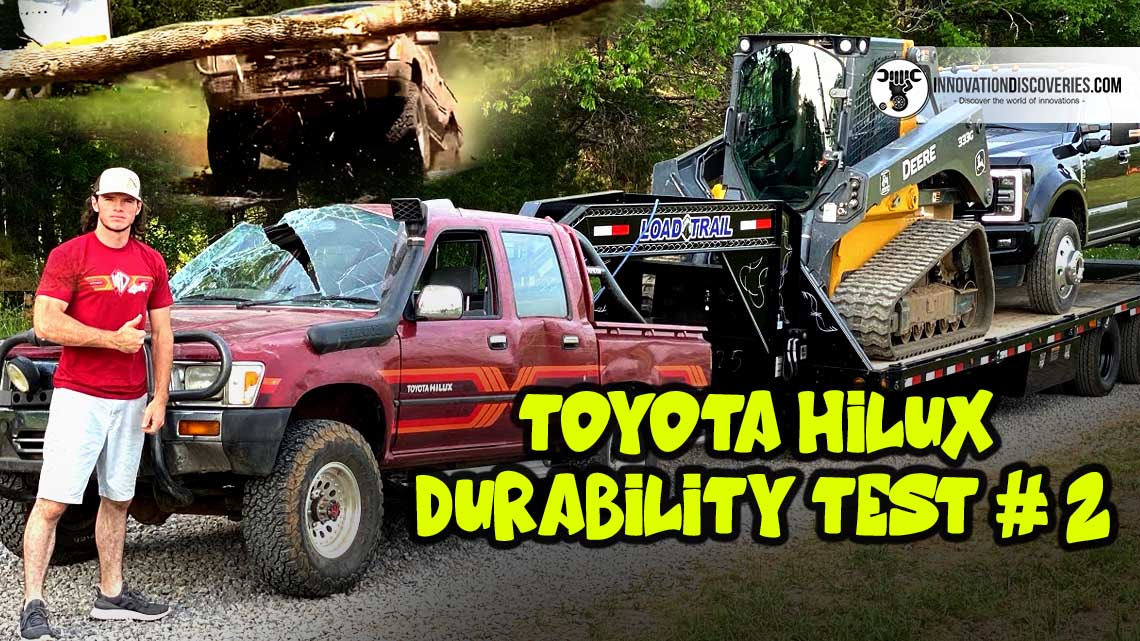
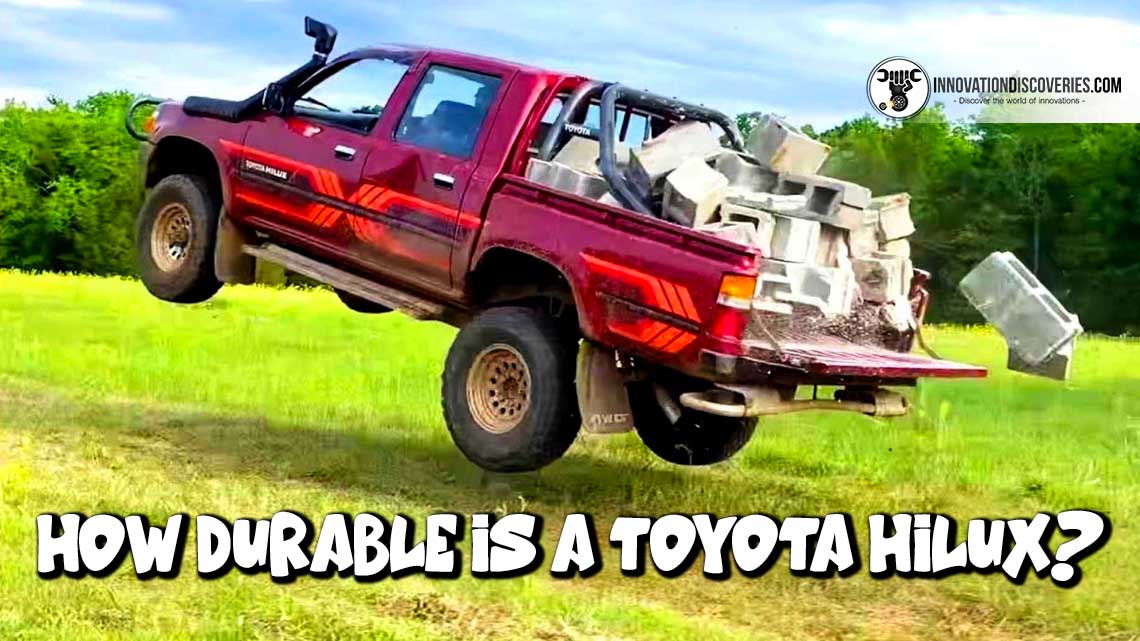

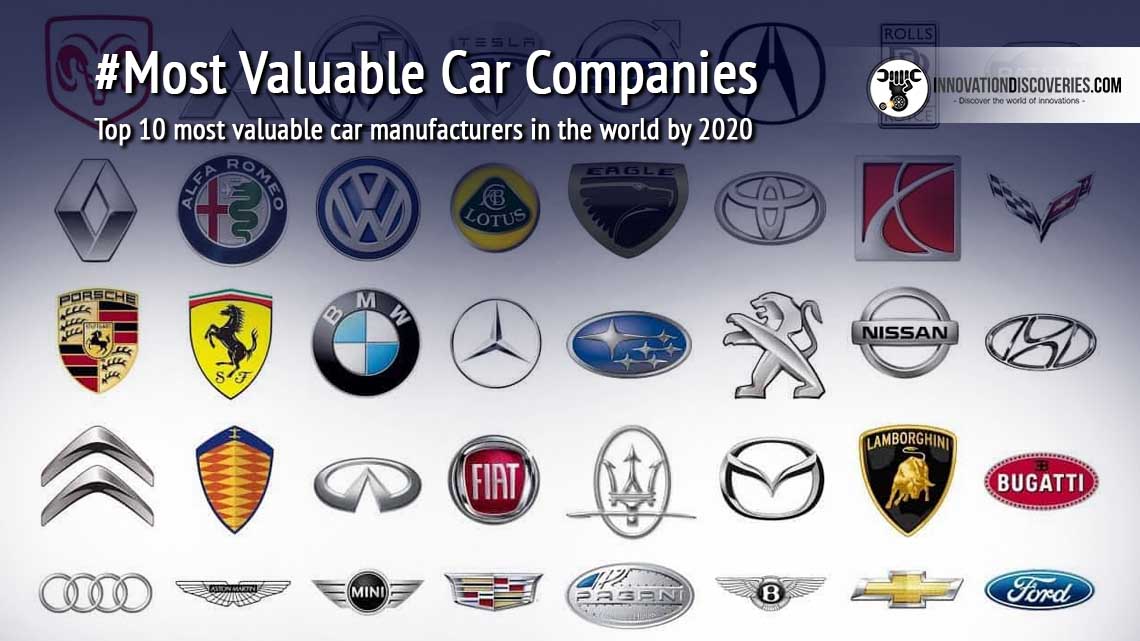
5 Comments